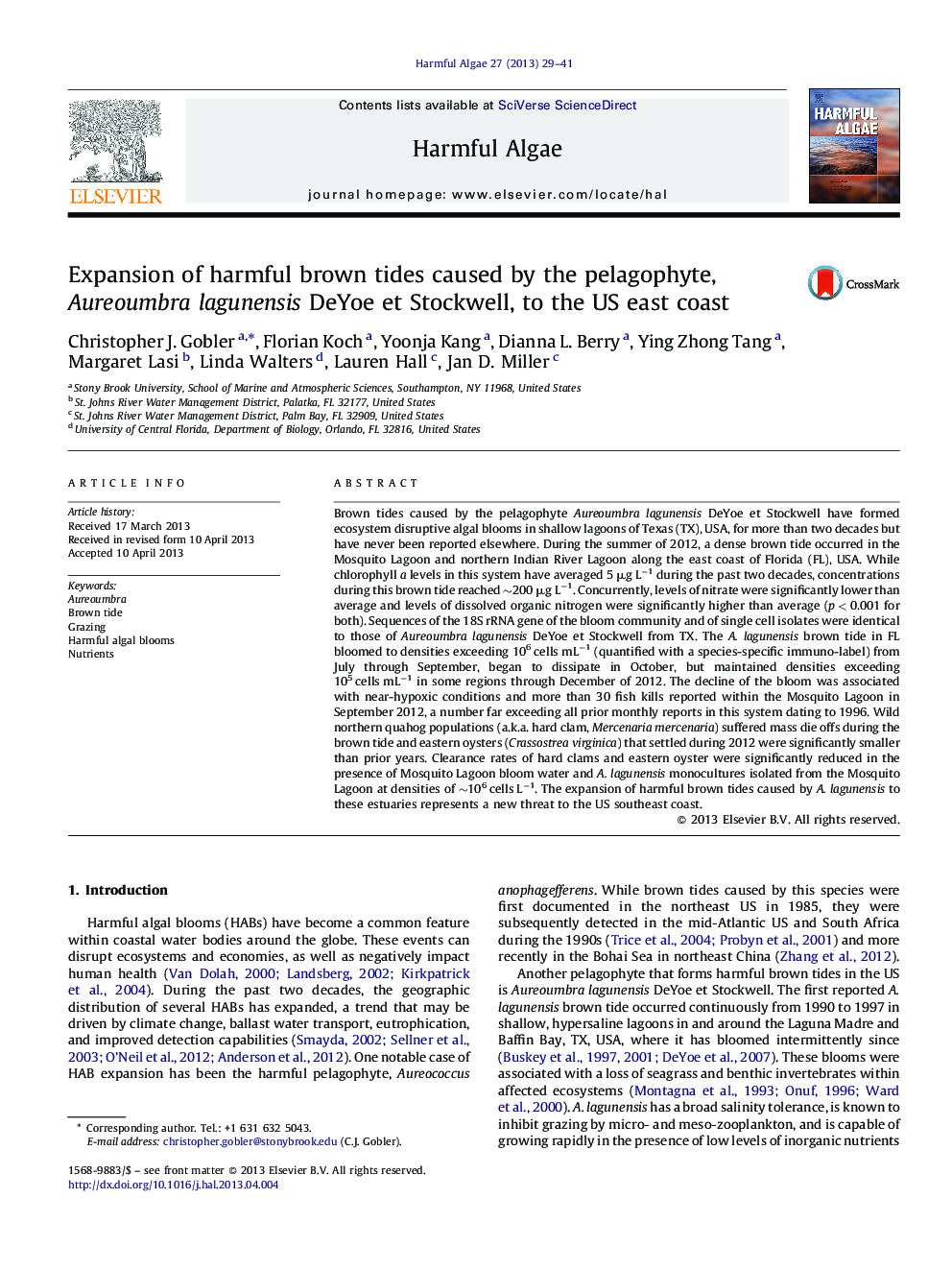| Article ID | Journal | Published Year | Pages | File Type |
|---|---|---|---|---|
| 6386317 | Harmful Algae | 2013 | 13 Pages |
â¢Aureoumbra lagunensis bloomed (>3 Ã 106 cells mLâ1) in the Mosquito and Indian River Lagoons, FL, USA, in 2012.â¢During blooms nitrate and oxygen were below average, while dissolved organic nitrogen and chlorophyll a were above average.â¢Bloom impacts included shellfish and fish kills; blooms and isolated cultures inhibited feeding by bivalves.â¢The expansion of brown tides caused by A. lagunensis into FL represents a new threat to US southeast coastal waters.
Brown tides caused by the pelagophyte Aureoumbra lagunensis DeYoe et Stockwell have formed ecosystem disruptive algal blooms in shallow lagoons of Texas (TX), USA, for more than two decades but have never been reported elsewhere. During the summer of 2012, a dense brown tide occurred in the Mosquito Lagoon and northern Indian River Lagoon along the east coast of Florida (FL), USA. While chlorophyll a levels in this system have averaged 5 μg Lâ1 during the past two decades, concentrations during this brown tide reached â¼200 μg Lâ1. Concurrently, levels of nitrate were significantly lower than average and levels of dissolved organic nitrogen were significantly higher than average (p < 0.001 for both). Sequences of the 18S rRNA gene of the bloom community and of single cell isolates were identical to those of Aureoumbra lagunensis DeYoe et Stockwell from TX. The A. lagunensis brown tide in FL bloomed to densities exceeding 106 cells mLâ1 (quantified with a species-specific immuno-label) from July through September, began to dissipate in October, but maintained densities exceeding 105 cells mLâ1 in some regions through December of 2012. The decline of the bloom was associated with near-hypoxic conditions and more than 30 fish kills reported within the Mosquito Lagoon in September 2012, a number far exceeding all prior monthly reports in this system dating to 1996. Wild northern quahog populations (a.k.a. hard clam, Mercenaria mercenaria) suffered mass die offs during the brown tide and eastern oysters (Crassostrea virginica) that settled during 2012 were significantly smaller than prior years. Clearance rates of hard clams and eastern oyster were significantly reduced in the presence of Mosquito Lagoon bloom water and A. lagunensis monocultures isolated from the Mosquito Lagoon at densities of â¼106 cells Lâ1. The expansion of harmful brown tides caused by A. lagunensis to these estuaries represents a new threat to the US southeast coast.
